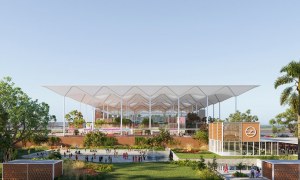🕑 Reading time: 1 minute
The RMIT University, in a recent study, found a way to strengthen 3D printed concrete (3DPC) by laying it in a lobster-shell pattern.
In a bid to overcome the technical challenges in making 3D printed concrete strong enough for use in more free-form structures, the researchers turned to the natural strength of lobster shells to design special 3D printing patterns. The bio-mimicking spiral patterns of lobster shells was found to improve the overall durability of 3D printed concrete.
Generally, 3D printing employs a unidirectional pattern as the most conventional pattern, with the layers of concrete being laid down on top of each other in parallel lines. But this new research examined the effect of different printing patterns on the strength of steel fiber-enhanced concrete.
The researchers studied the outcomes of printing the concrete in helicoidal (inspired by the internal structure of lobster shells), quasi-isotropic and cross-ply patterns (similar to those used for layer-by-layer deposited composites and laminated composite) and standard unidirectional patterns.

The results exhibited improvement in strength from all of the patterns when compared with unidirectional printing. The spiral patterns, among the helicoidal patterns, improved the overall durability of the 3D printed concrete, and also enabled the strength to be precisely directed for structural support where required.
As a result, the team was able to develop a stronger concrete by combining the twisting patterns with a specialized concrete mix enhanced with steel fibers.
RMIT will conduct further studies using a new large-scale mobile concrete 3D printer recently acquired by it.
Read More
3D Printing in Construction Industry- Process and Benefits



